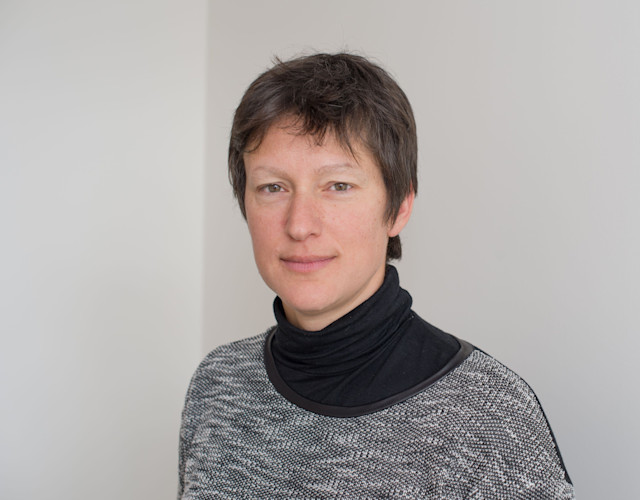Urgence gaz 0 800 028 800

Accelerating transition: Teréga’s research and innovation approach
The energy sector is going through a time of unprecedented significant change. Some of the change is of course to do with energy transition, which is aimed in particular at decarbonising the system and minimising its environmental footprint. Our strongly-held conviction is that innovation is a strategic tool which can make that transformation a success.
The IMPACTS 2025 innovation plan: a practical response to the challenges of energy transition.
The Law on Energy Transition for Green Growth (Loi de Transition Énergétique pour la Croissance Verte, or LTECV), enacted in 2015, lays the foundations for the transformation our energy system must undergo in the medium term to become more virtuous. Our energy sources, currently dominated by fossil fuels, must evolve into a low-carbon, renewable, diversified energy mix from less geographically dependent sources.
There are many diverse issues that must be addressed to meet those targets. That is why we have opted for a Research and Innovation strategy that covers a wide field of actions. In 2018, we initiated the IMPACTS 2025 Innovation Plan, which defines the roadmap for our transport and storage activities over a 3-year period. This plan sets out the company’s strategic ambitions and defines priority objectives based on the energy and digital platforms. In 2021, the plan was revised to define the 2021-2023 targets.
The IMPACTS 2025 Innovation Plan should enable us to:
establish our position as an exemplary operator of gas infrastructures in the long term, as we continuously improve, particularly to safeguard operational performance, the integrity and energy efficiency of our systems, the safety of persons and operations, the digitisation of our activities and protection of the environment
affirm our role as an accelerator of energy transition, through two areas: the adaptation of our infrastructures with the arrival of new gases (also known as green gases) and studying the synergies that exist between the different energy carriers and their infrastructures (multi-energy Smart Grids)
These major challenges are being tackled through a high-performing, bold and collaborative innovation strategy. Teréga has a company-wide approach to Research and Innovation, involving colleagues from different areas of professional expertise and different departments, project promoters and Research & Innovation programme managers. All of this is coordinated by the Research & Innovation Division. It enables us to build innovation into how we approach every one of our business activities and challenges.
The 6 major objectives of the IMPACTS 2025 Innovation Plan
At Teréga, one of our priorities regarding innovation is to maintain the safety, reliability, durability and availability of our transmission and storage infrastructures to ensure continuity of service and security of supply.
As a result, projects are ongoing around the themes of personal safety on sites, or optimising fault detection and protection for pipelines. We also undertake research into how to make digitisation serve our activities better and to improve monitoring of our grid. These actions aim to strengthen our PARI 2035 safety strategy program.
Several Research and Innovation projects are dedicated to finding effective solutions to limit our environmental impact. We work both to preserve biodiversity and to reduce our greenhouse gas emissions, studying solutions such as mobile recompression. This approach is part of our BE POSITIF corporate environmental programme.
To encourage the injection of biomethane and synthetic methane into our grid, our teams ensure that our transmission and storage infrastructures can support them over the long term. A number of projects have therefore been undertaken, looking at these renewable gases, to define acceptability thresholds, optimise their quality and verify their potential impact over time, then resolve any issues by adapting our infrastructures appropriately.
We are actively participating to develop the hydrogen industry with the aim of adapting our grid to its transport and storage. Several studies have been carried out on the compatibility of this gas with our infrastructures and equipment, in order to implement dedicated solutions to allow its safe injection into our grid. We have also launched several projects to design a pure hydrogen grid, such as the Franco-Spanish Lacq Hydrogen project, the first link in a European hydrogen grid.
Today, the different energy grids operate separately and sub-optimally. At Teréga, we feel the optimisation of existing resources is crucial for reaching energy transition and environmental targets. This is why our innovation is actively focused on developing multi-energy systems and intelligent grids that promote synergy between different energies: electricity, methane, heat, hydrogen, etc. Our ambition for the future is embodied in our multi-energy system demonstrator project: IMPULSE 2025.
In order to provide an ever more efficient service, our teams study the possibilities of enriching our catalogue with new commercial offers to best meet the needs identified by our customers.

Cécile BoesingerR&I manager for Teréga’s Strategy and Innovation divisionInnovation is focussed mainly on the two key points – energy transition and digital transformation – but the top-priority mission of R&I is to make the company perform better.
What exactly is a Research and Innovation project?
Innovation at Teréga is directly connected to operational requirements. It must develop solutions that can be practically applied either to our infrastructures or to the services we offer our customers. It therefore covers areas such as:
improving and developing knowledge within Teréga, and its practices;
qualifying technologies or new methodologies by means of tests and the construction of prototypes in order to resolve uncertainty about their feasibility ;
integrating the solutions developed into Teréga’s operational environment.
We sponsor projects which can be deployed across our production facilities at the end of a development programme lasting about three years. Once its feasibility has been confirmed, the project moves to the industrialisation and deployment phase, at which point it moves beyond the scope of the R&I teams. The innovation is then carried forward by the business teams in question.




